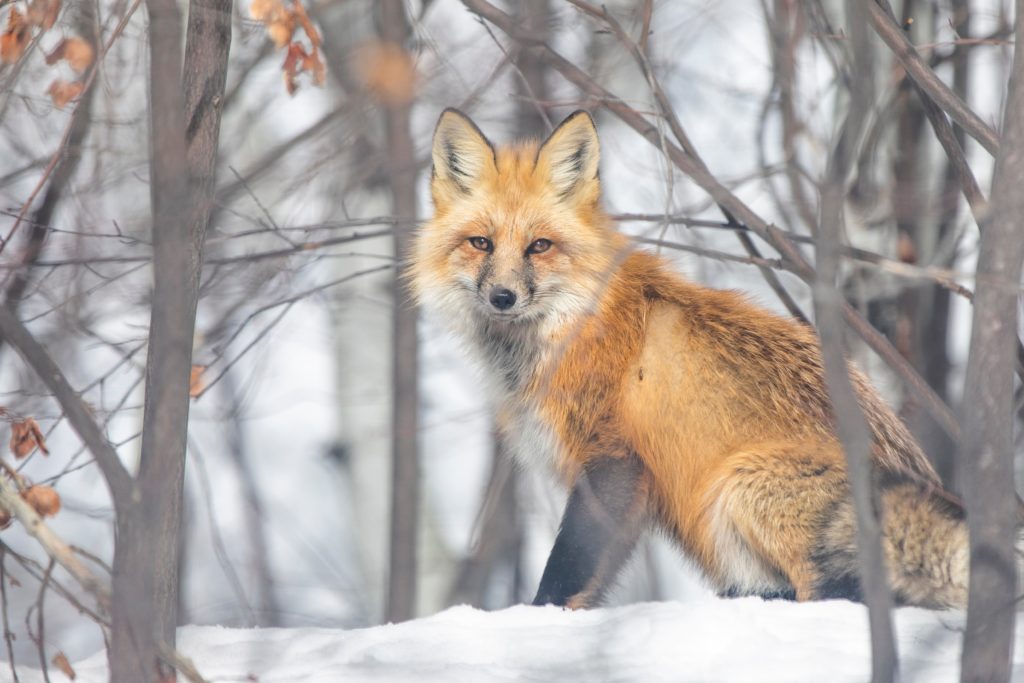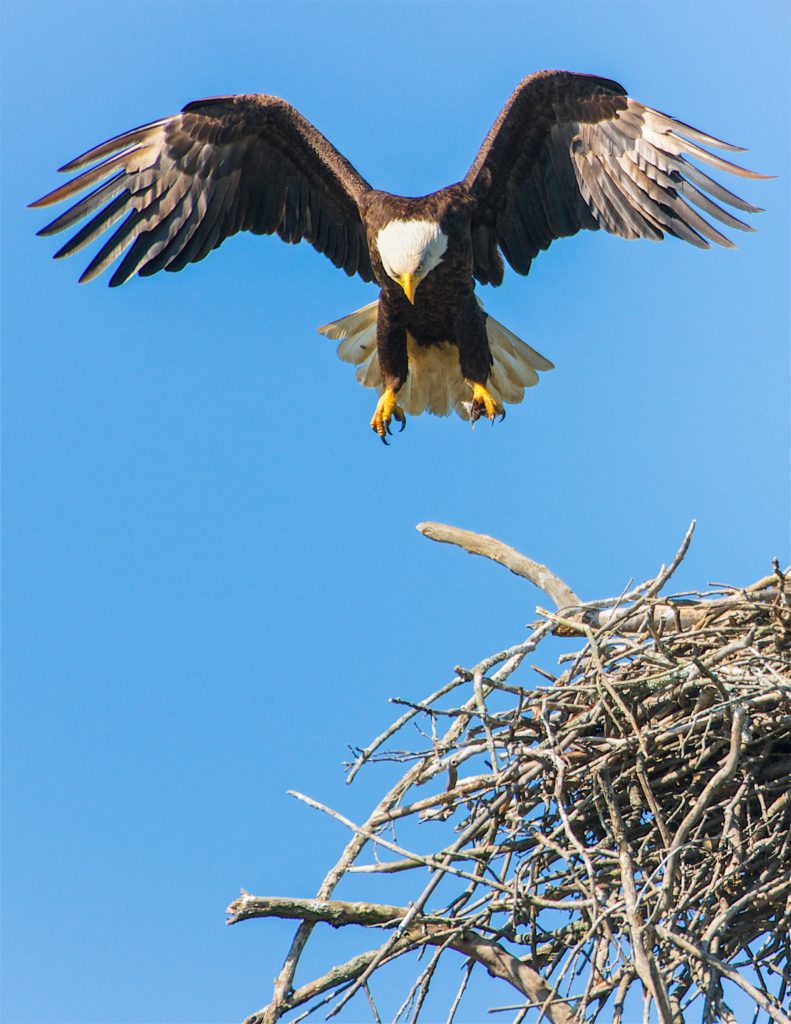“What we call the beginning is often the end
– Little Gidding, T.S.Eliot
And to make an end is to make a beginning.
The end is where we start from. …
Every phrase and every sentence, [every season], is an end and a beginning.”
It’s oh, so cold out right now! We are donning extra layers and paying attention to fingers and toes that might be prone to frostbite. We are weary and it seems like winter will go on forever. But take heart! We have passed the point of no return and nature is already preparing for the coming spring.
The end is the beginning, as Eliot wrote, and as winter ends, here are signs that spring is on its way.
Look to the skies
Bald Eagles: These large birds will be carrying sticks to spruce up their nests. Egg laying will be happening sometime near the end of February.
American Crows: Watch for migrating flocks of crows as they make their way north. These birds, along with ravens and blue jays, may also be seen carrying sticks for their nests at this time of year.
Red-tailed Hawks: Catch sight of them soaring northward, riding on the southern winds.
Keep an eye to the ground
Fox and Coyote: These canids are in the thick of their mating season. You may see the typically solitary fox now moving in pairs as they search for den sites. Look for a long, straight line of tracks, back foot track falling into front foot track, which is called “direct registering.” It is very different from their dog cousins who meander all over the place. If you are fortunate enough to watch one of these wild canines in their home habitat, you may notice that they seldom walk but seem to trot from place to place, using their keen sense of smell to find prey.

Squirrels: Red, gray, fox and flying squirrels are all in the throes of mating season. Young will be born in early spring, just in time to coincide with the birth of young raptors and canines. Watch for squirrels chasing each other around tree trunks and around the yard within their territory. Listen for the loud “kuk-kuk” and “quaa-quaa” sounds that signal the female is ready to mate.
Racoons and Skunks: These mammals are also out looking for mates. In our area, raccoon tracks are more frequently seen. These critters tend to lumber as they walk, which means they move both limbs on the same side as they move, creating more of a sinuous, side-to-side track. Their paws can look like miniature hands. Look for them along woodland edges and in the forest.
Use all your senses
Even when the temperature hovers near zero, each day brings new sounds and smells. Feel the excitement! Take a few moments every day to observe what’s happening in your backyard or neighborhood. It’s a great way to be in touch and stay in touch with the miracles of the natural world.
Resources:
A Guide to Nature In Winter by Donald Stokes
Field Guide to Tracking Animals in Snow by Louise Forrest
Mammal Tracks & Sign: A Guide to North American Species by Mark Elbroch
The Cornell Lab Online Guide to Birds and Bird Watching (allaboutbirds.org)
Wintersigns in the Snow by Gerald Cox

